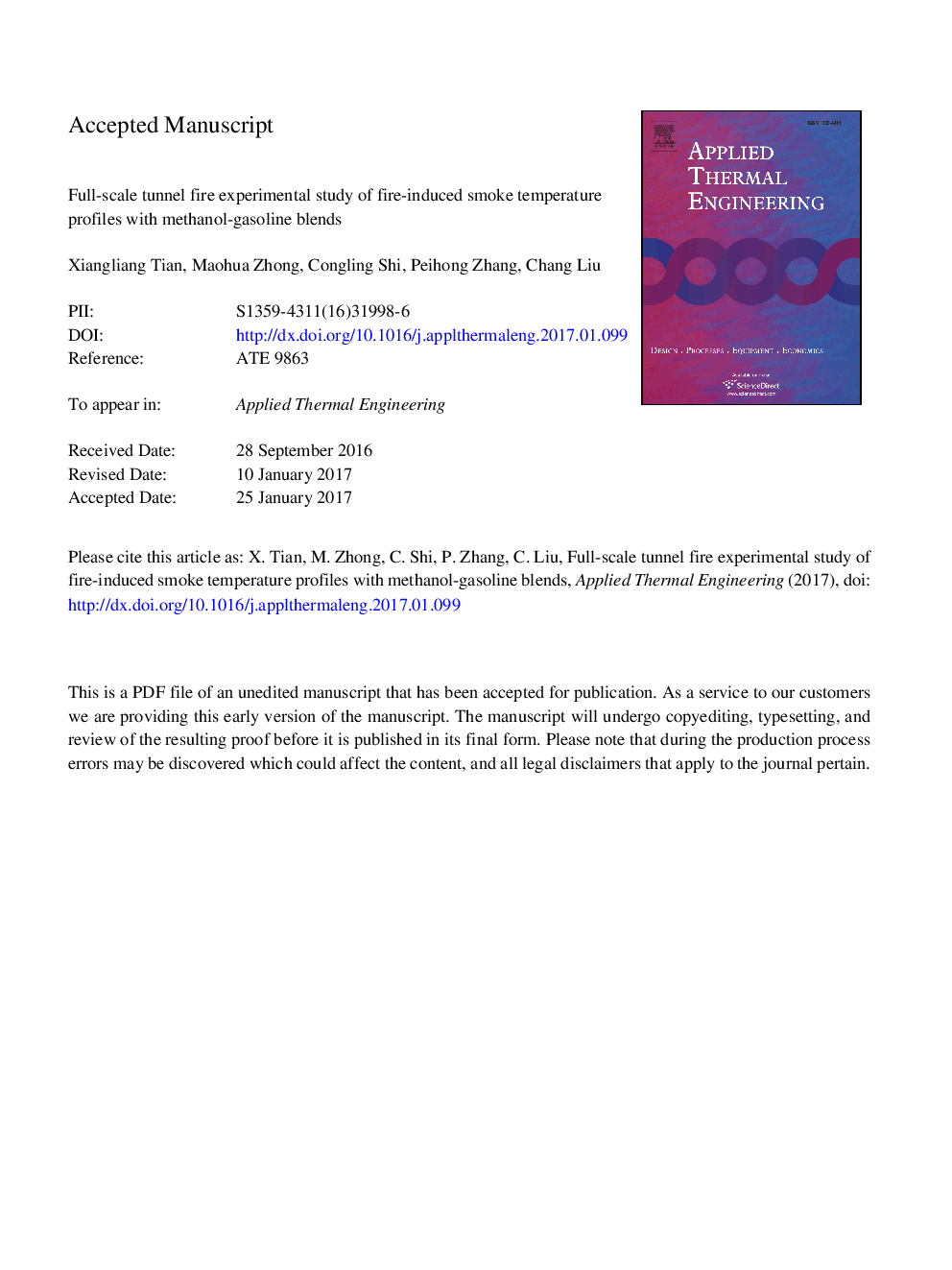| کد مقاله | کد نشریه | سال انتشار | مقاله انگلیسی | نسخه تمام متن |
|---|---|---|---|---|
| 4991436 | 1457113 | 2017 | 36 صفحه PDF | دانلود رایگان |
عنوان انگلیسی مقاله ISI
Full-scale tunnel fire experimental study of fire-induced smoke temperature profiles with methanol-gasoline blends
ترجمه فارسی عنوان
آزمایشات آتش سوزی تونل تمام عیار در مورد پروفیل حرارتی دود ناشی از آتش سوزی با متانول-بنزین مخلوط
دانلود مقاله + سفارش ترجمه
دانلود مقاله ISI انگلیسی
رایگان برای ایرانیان
کلمات کلیدی
آتش تونل، مخلوط، دمای سقف، مشخصات دم دود، غلظت دود،
ترجمه چکیده
متانول-بنزین مخلوط پروفیل های دمای دود ناشی از آتش سوزی در آزمایشی آتش سوزی تونل کامل با مخلوط های مختلف و شرایط مختلف تهویه ای طولی اندازه گیری شد. پروفیل میدان جریان، که در مقیاس تونل غیرمتعارف بود، با سرعت بادی مقاطع تونل مشخص شد. این آزمایشات درجه حرارت سقف را در امتداد خط مرکزی تونل، پروفیل های دما، دمای دود، پارامترهای دیگر بررسی کرد. یک مدل برای تخریب دما سقف در امتداد تونل تحت شرایط لایه دود ناشی از آتش سوزی بر اساس تجزیه و تحلیل تئوری و منحنی پوسیدگی درجه حرارت سقف با فاصله از منبع آتش ایجاد شد. انتقال دود بیشتر باعث افزایش دید و غلظت دود شد. غلظت دود به طور معنی داری با کاهش دمای سقف با افزایش غلظت دود منجر به کاهش سریع دمای سقف می شود.
موضوعات مرتبط
مهندسی و علوم پایه
مهندسی شیمی
جریان سیال و فرایندهای انتقال
چکیده انگلیسی
The methanol-gasoline blends fire-induced smoke temperature profiles were measured in full scale tunnel fire experiments with different blends and different longitudinal ventilation conditions. The flow field profile, which was nonuniform in the full-scale tunnel, was characterized by the wind speeds of tunnel cross-sections. The experiments investigated the ceiling temperatures along the tunnel centerline, the smoke layer temperature profiles, the smoke transmissivities and other parameters. A model was developed for the ceiling temperature decay along the tunnel under stable fire-induced smoke layer conditions based on theoretical analysis and the curve fits of the ceiling temperature decay with distance from the fire source. Higher smoke transmissivity resulted in higher visibility and lower smoke concentration. The smoke concentration significantly influences the ceiling temperature decay with higher smoke concentration leading to faster decay of the ceiling temperature.
ناشر
Database: Elsevier - ScienceDirect (ساینس دایرکت)
Journal: Applied Thermal Engineering - Volume 116, April 2017, Pages 233-243
Journal: Applied Thermal Engineering - Volume 116, April 2017, Pages 233-243
نویسندگان
Xiangliang Tian, Maohua Zhong, Congling Shi, Peihong Zhang, Chang Liu,
